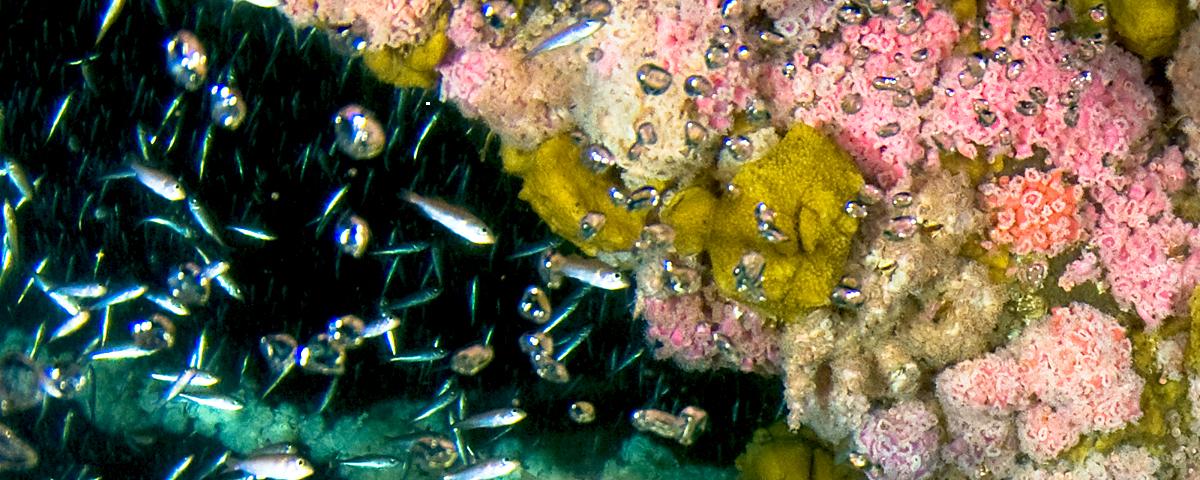Physical and chemical characteristics of the Platform Gina shell mound. Final Report.
Abstract
From the Executive Summary: “This report presents the results and key findings from a study conducted as part of an ongoing program by the U.S. Minerals Management Service (MMS) to describe the sizes, configurations, and compositions of shell mounds associated with offshore oil and gas platforms. The objective of this pilot study was to provide information on the physical and chemical characteristics of the shell mound at Platform Gina in the outer continental shelf waters of the Santa Barbara Channel. To achieve this objective, sediment cores from the Platform Gina shell mound were collected, sub-sampled by strata, and analyzed for grain size and chemical constituents (e.g., organic carbon, sulfides, metals including barium, volatile and semi-volatile organics, and petroleum hydrocarbons).
The Platform Gina shell mound consists mainly of sands with varying proportions of gravel and fine-sized particles. The gravel-sized particles comprise predominantly subrounded pieces ranging up to several millimeters and similarly sized shell fragments (shell hash). Some cores contained sections with alternating light and dark banding, as well as dark, amorphous clumps and a slight sheen with petroleum and/or sulfide odors.
Total organic carbon (TOC) concentrations in the core samples were relatively uniform and within a factor of three of reference sediment concentrations, whereas sulfides concentrations varied by more than one order of magnitude and were significantly correlated with total recoverable petroleum hydrocarbon (TRPH) concentrations. Barium, which is a chemical marker for drilling fluids, was present at elevated concentrations (up to 2,700 mg/kg) in several samples, particularly in the surface and middle layers of cores, along with elevated lead and zinc levels. TRPH concentrations also varied within the mound, with a maximum concentration of 4,000 mg/kg, reflecting a wide range of petroleum hydrocarbon levels within the shell mound. Individual volatile and semi-volatile hydrocarbons, including polycyclic aromatic hydrocarbons (PAH), occasionally were detected but at concentrations less than 1 mg/kg. Detailed hydrocarbon analyses, using more sensitive analytical methods, of a subset of core samples detected substantially higher PAH concentrations along with other hydrocarbon characteristics that are indicative of weathered petroleum from a local crude oil source (i.e., Monterey Formation). Pesticides and polychlorinated biphenyls were not detected in any of the shell mound samples. The highest concentrations of many of the chemical constituents occurred in the middle stratum of the shell mound, although sediments from the surface stratum also contained elevated barium relative to reference sediment concentrations, indicating that drilling wastes are not confined to the middle stratum.
Because the results from this pilot study are from a single shell mound site, the extent to whic07they are representative of the characteristics of other shell mounds on the outer continental shelf presently can not be determined. However, the results from the Platform Gina shell mound share some similarities and differences with previous studies of the Hazel, Heidi, Hilda, and Hope (“4H”) shell mounds that were associated with decommissioned platforms in State waters with the Santa Barbara Channel. For example, the 4H shell mounds contain elevated barium and TRPH concentrations that are comparable to levels present in the Gina shell mound. The 4H shell mounds also contained elevated (part-per-million levels) of volatile organic compounds, whereas these compounds were detected only sporadically and at concentrations that were two or more orders of magnitude lower in the Platform Gina shell mound samples. Further, previous monitoring studies conducted by MMS of the effects of discharges from three OCS platforms (Harvest, Hermosa, and Hidalgo) in deeper and highly dispersive waters of the Santa Maria Basin showed minimal changes to the sedimentary environment. Differences between the Platform Gina, 4H, and Santa Maria Basin sites in contaminant levels likely reflect a number of factors, including: physical conditions that affect the dispersion and accumulation of discharged materials on the seafloor; numbers of wells drilled and volumes of materials discharged at each platform; and the chemical composition of the platform discharges which, in turn, reflect increasingly tighter regulatory restrictions on the more recent platform discharges compared with those associated with earlier drilling and production operations.

